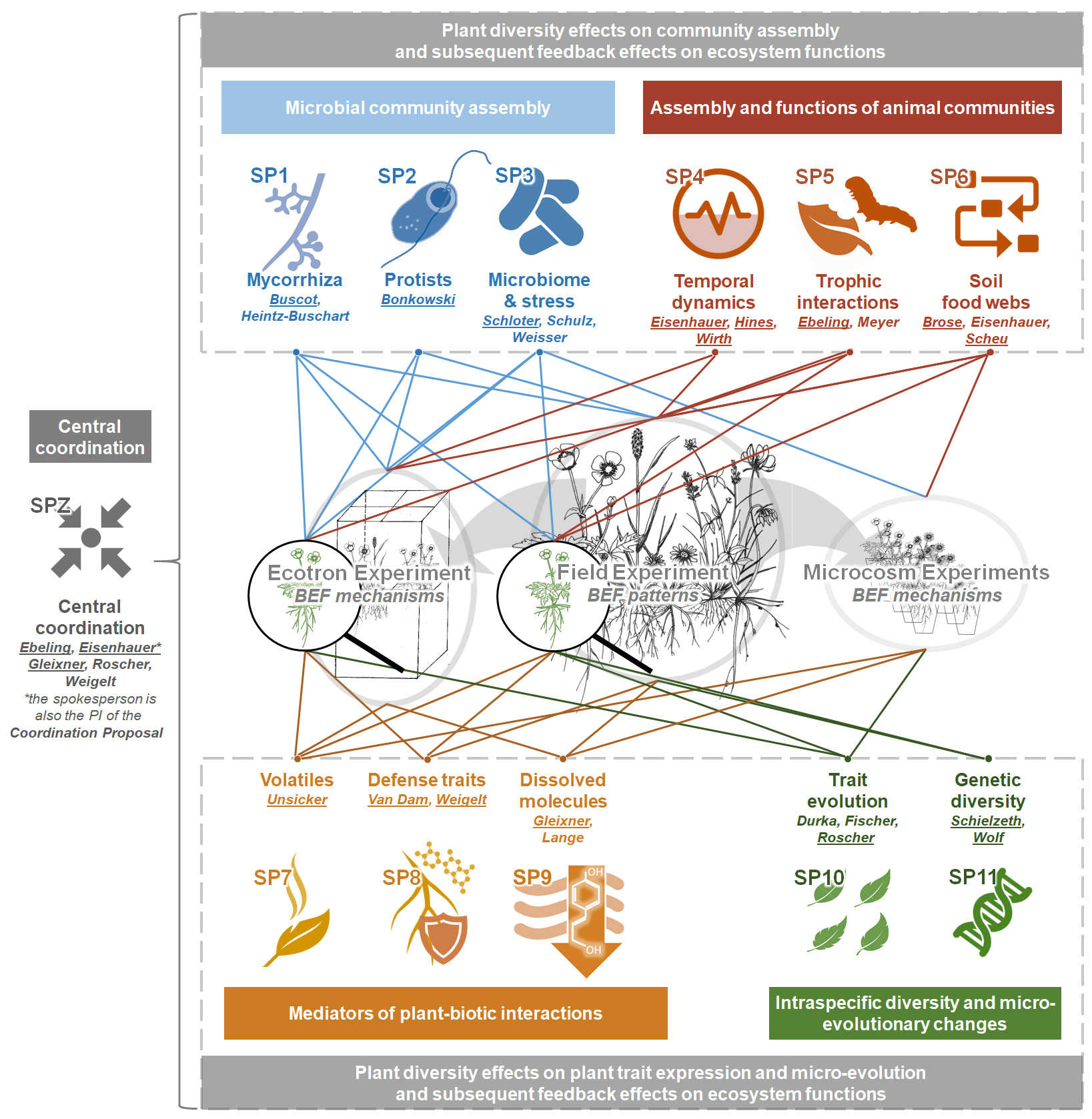
Structure of the proposed Research Unit. Three complementary experimental approaches are envisaged to study long-term biodiversity-ecosystem function (BEF) relationships, and how these are influenced by plant history and soil history. BEF patterns are studied in the Field Experiment with long-term plant diversity plots and manipulations of soil-history effects. BEF mechanisms are studied in the Ecotron Experiment and in Microcosm Experiments. In the Ecotron Experiment, plant history and soil history are independently crossed and detailed process measurements are possible. The Microcosm Experiments zoom in on focal interactions. In the Field Experiment and in the Ecotron Experiment, studies are conducted at the community level as well as at the plant individual level (magnifier; see detailed design of studies in the Appendices). Subprojects’ (SPs’) participation in experiments are illustrated with lines. The SPs of the proposed Research Unit fall into two tightly linked main categories (in gray) with two research areas each that aim at exploring variation in community assembly processes, micro-evolutionary changes, and resulting differences in biotic interactions as determinants of the long-term BEF relationship. Subprojects under “Microbial community assembly” (blue) and “Assembly and functions of animal communities” (red) mostly focus on plant diversity effects on the assembly of communities and their feedback effects on biotic interactions and ecosystem functions, while subprojects under “Mediators of plant-biotic interactions” (orange) and “Intraspecific diversity and micro-evolutionary changes” (green) mostly focus on plant diversity effects on plant trait expression and micro-evolution. PIs with requested personnel are underlined.